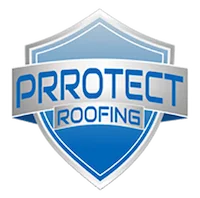As the cold weather sets in, homeowners must take proactive steps to protect their roofs from the harsh elements of winter. Snow, ice, and freezing temperatures can cause significant damage to your roof if it isn’t properly prepared. From creating an effective maintenance plan to performing critical repairs before the season begins, understanding the risks winter poses to your roof is key to avoiding costly damage.
In this article, we’ll discuss essential steps for safeguarding your roof during the winter months, ensuring it remains functional and protective throughout the season. Whether your roof is made of asphalt shingles, metal, or tile, taking time to address winter weather concerns can prolong the life of your roof and keep your home safe and warm.
Why Winter Weather is Tough on Roofs
Winter brings a range of challenges that can have detrimental effects on your roof. Freezing temperatures, snow accumulation, ice buildup, and strong winds all combine to create a potentially hazardous situation for your roof. Each of these elements can lead to distinct types of damage if not addressed properly.
Snow and Ice Load
Snow and ice accumulation on your roof can add considerable weight to the structure. This additional load can cause sagging, damage to roofing materials, and even collapse in extreme cases. It’s important to consider the weight of snow and ice as a major risk factor in the winter months.
Freezing and Thawing Cycles
When snow and ice begin to melt, they can seep into cracks and crevices in your roof. As temperatures drop again, the water refreezes, expanding and causing further damage. This cycle of freezing and thawing can erode the materials on your roof, leading to potential leaks, cracks, or other forms of damage.
Ice Dams
One of the most common winter-related issues homeowners face is the formation of ice dams. Ice dams occur when the melting snow on your roof refreezes at the edges, blocking water from draining properly. This trapped water can eventually find its way under shingles, leading to leaks and water damage inside your home. Preventing ice dams requires proper roof preparation and insulation.
High Winds
During winter storms, strong winds can rip shingles or tiles from the roof, leaving it vulnerable to leaks and further damage. The combination of snow, ice, and wind can create a perfect storm for roofing issues, especially if the roof is already in poor condition.
Essential Tips to Prepare Your Roof for Winter
To avoid the pitfalls of winter weather and ensure your roof stands strong against the elements, follow these essential tips for preparation and maintenance:
1. Clean Your Gutters and Downspouts
One of the most important steps in preparing your roof for winter is ensuring your gutters and downspouts are free from debris. Clogged gutters prevent water from draining properly, which can cause water to back up onto the roof, leading to ice dams, leaks, and even roof rot.
Before winter sets in, clean your gutters thoroughly. Remove leaves, twigs, and other debris to allow for proper water drainage. If necessary, install gutter guards to prevent debris buildup throughout the season.
2. Inspect and Repair Damaged Shingles or Tiles
Damaged shingles or tiles are a major vulnerability during winter storms. Cracked or missing shingles can allow water to infiltrate the roof, leading to leaks and significant interior damage. Before winter weather arrives, inspect your roof for any signs of damage or wear.
Look for loose or missing shingles, cracked tiles, or signs of curling and buckling. These should be replaced or repaired before the first snowflake falls to avoid further damage. If you’re unsure about the condition of your roof, it’s always a good idea to hire a professional roofer to perform a detailed inspection.
3. Ensure Proper Insulation and Ventilation
One of the key causes of ice dams is improper attic insulation and ventilation. If your attic is not properly insulated, heat from the home can escape into the attic, causing snow on the roof to melt. This melted snow then refreezes at the eaves, forming an ice dam.
To prevent ice dams, ensure that your attic is adequately insulated to prevent heat loss. Additionally, make sure your attic is properly ventilated to maintain a cold roof surface. This will allow the snow to melt and drain off the roof properly, reducing the risk of ice dams.
4. Trim Overhanging Tree Branches
Snow and ice accumulation can cause overhanging branches to break or bend, which can result in them falling onto the roof. To prevent damage from falling limbs, trim any trees near your roofline before winter. By removing dead or weak branches, you can reduce the risk of branches breaking and damaging your shingles or causing other roofing issues.
5. Check Flashing and Seals
Flashing is the material used to seal joints and areas around chimneys, vents, and skylights on the roof. Over time, flashing can deteriorate, crack, or pull away from the surface. This creates gaps that allow water to seep under the roofing materials, potentially causing leaks.
Before winter sets in, inspect all flashing on your roof for any signs of damage. Reseal any gaps and replace any damaged flashing to prevent leaks during snowstorms or freezing temperatures. Pay particular attention to areas around roof penetrations, such as chimneys and vents, where water is most likely to find an entry point.
6. Clear Snow and Ice Buildup Regularly
During winter, snow and ice can accumulate on your roof. While your roof is designed to handle some weight, excessive snow or ice buildup can lead to structural damage. Use a roof rake with a long handle to carefully remove snow from the roof. Be cautious not to damage shingles or roofing materials while removing snow.
If ice begins to form along the roof’s edge, consider using an ice melt product designed for roofs to safely clear the buildup. Avoid using salt, as it can damage roofing materials. If ice dams form, consider hiring a professional to remove them safely and prevent further damage.
7. Install Ice and Water Shield
Ice and water shield is a protective membrane that is installed along the eaves and valleys of the roof to prevent water infiltration. This is particularly important in areas that are prone to ice dams. If you live in a region where heavy snow and ice are common, installing an ice and water shield during your roof’s installation or replacement can provide added protection during the winter months.
The membrane creates a watertight barrier that helps prevent leaks caused by ice dams, protecting your home’s interior and roof structure.
What Can Happen if Snow or Ice Builds Up on Your Roof?
Snow and ice buildup can lead to several dangerous and costly roofing problems:
1. Ice Dams
As mentioned earlier, ice dams form when melting snow refreezes at the roof’s edge, blocking water from draining. This trapped water can seep under shingles and cause leaks, resulting in water damage to the attic, walls, ceilings, and insulation.
2. Roof Collapse
Heavy snow and ice accumulation can add significant weight to the roof. If the roof is not designed to handle this weight, it can sag or even collapse. This is especially true for older roofs or roofs with existing damage. Ensuring that your roof is free from excess snow and ice can prevent this catastrophic failure.
3. Shingle Damage
Snow and ice can weaken shingles, causing them to crack, curl, or even break off entirely. When water freezes under shingles, it can cause them to lift or break apart. This can result in leaks that damage your home’s interior and lead to expensive repairs.
How to Prevent Ice Dams from Forming on Your Roof
Ice dams are a common issue during winter, but they can be prevented with proper maintenance and preparation. Here are some tips to reduce the risk of ice dams:
- Improve Insulation and Ventilation: Ensure that your attic is properly insulated and ventilated to prevent heat from escaping into the attic, causing snow to melt prematurely.
- Use Ice and Water Shield: Install a protective membrane along the roof edges to prevent water infiltration caused by ice dams.
- Remove Snow Regularly: Use a roof rake to remove snow from the roof to reduce the buildup of snow and ice along the edges.
- Ensure Proper Drainage: Check that your gutters and downspouts are clear of debris to allow water to flow freely off the roof.
Taking Steps to Protect Your Roof from Winter Damage
Winter weather can be harsh on your roof, but taking the right steps to prepare it for snow, ice, and freezing temperatures can help you avoid costly damage. Regular maintenance, including cleaning gutters, checking for damage, and ensuring proper insulation and ventilation, can protect your roof and keep it functioning effectively throughout the winter months. By taking proactive measures before winter sets in, you can save yourself from expensive repairs and ensure that your roof remains in top condition for years to come. At Prrotect Roofing, we have years of experience maintaining roofs through extreme weather conditions, and our roofing contractors in St.Peters, Fenton & Ballwin offer expert advice on keeping your roof safe during winter.
FAQs
How do I prepare my roof for winter?
Inspect your roof for damaged shingles, clean gutters, ensure proper attic insulation and ventilation, and trim overhanging tree branches to prepare for winter.
What can happen if snow or ice builds up on my roof?
Snow and ice buildup can lead to ice dams, roof collapse, and damage to shingles, which can result in leaks and costly repairs.
How can I prevent ice dams from forming on my roof?
Prevent ice dams by improving attic insulation and ventilation, using ice and water shield, regularly removing snow, and ensuring proper drainage in gutters and downspouts.


